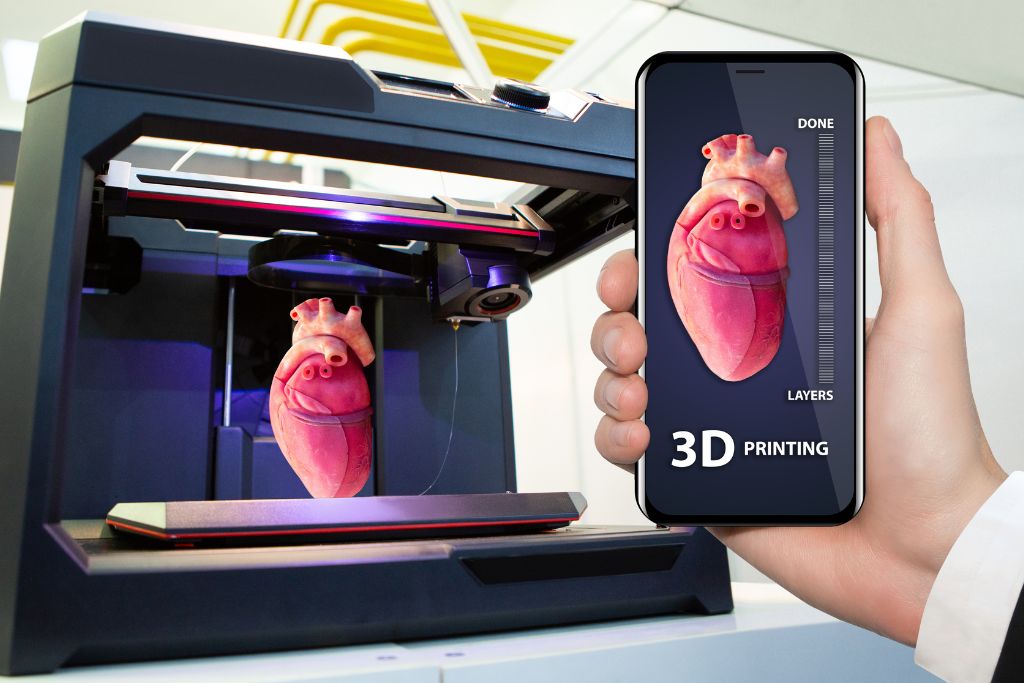As the world evolves, so does healthcare. With advancements in technology and shifts in societal needs, we are witnessing a revolution in the way healthcare is delivered. From virtual consultations to 3D printing of organs, these trends are shaping the future of medicine as we know it. In this blog post, we’ll explore some exciting developments that are changing the face of healthcare and what they mean for patients and providers alike. Join us on this journey through cutting-edge innovations that will shape our health landscape for years to come!
Telemedicine
Telemedicine is a term that describes the use of technology to provide healthcare services remotely. It has become increasingly popular due to its convenience and accessibility, especially in areas where physical access to medical facilities might be limited.
One benefit of telemedicine is that it allows patients to receive medical attention without having to leave their homes. This can be particularly valuable for elderly or disabled patients who may have difficulty travelling long distances. Another advantage of telemedicine is that it helps reduce the cost of healthcare by eliminating the need for expensive equipment and infrastructure. With virtual consultations, doctors can diagnose and treat patients using just their computers or mobile devices.

However, there are also some concerns about telemedicine’s effectiveness compared to traditional face-to-face consultations. Some argue that certain health conditions require an in-person examination or testing which cannot be achieved via remote consultation alone.
Despite these challenges, telemedicine continues to grow as more people seek out convenient solutions for their healthcare needs. As technology advances further, we can expect even more innovative uses for this promising trend in the future.
Artificial Intelligence in Healthcare
Artificial Intelligence (AI) has been making waves in the healthcare industry and changing the way medical professionals approach patient care. AI can be used to analyze vast amounts of data, identify patterns, and make predictions based on that information. This technology is already being used to improve diagnostics, drug development, and patient outcomes.
One example of how AI is revolutionizing healthcare is through medical imaging analysis. Traditional methods often require human interpretation which can lead to errors or delays in diagnosis. With AI-powered tools, medical images such as X-rays or MRIs can be analyzed quickly and accurately using algorithms trained on large datasets. Another application for AI in healthcare is personalized medicine. Using machine learning algorithms, doctors can predict a patient’s response to different treatments based on their genetic makeup and other factors unique to them. This allows for more targeted treatment plans tailored specifically to an individual’s needs.

AI also has the potential to reduce costs by increasing efficiency in healthcare delivery systems through automated administrative tasks like scheduling appointments or managing electronic health records. Despite its immense benefits, there are still challenges that come with implementing AI in healthcare such as ensuring privacy protection of sensitive patient data and regulating the ethical use of this technology by medical practitioners.
3D Printing in Healthcare
The healthcare industry is witnessing a significant transformation with the integration of 3D printing technology. It has revolutionized the way medical professionals approach surgical procedures, organ replacement, and prosthetics development.
One of the most significant advantages of 3D printing in healthcare is personalized medicine. The technology can help create patient-specific implants and prosthetics that are tailor-made to fit their unique anatomy. This means that patients get better care and improved outcomes as compared to traditional methods.

Moreover, 3D printing has also shown promise in developing replacement human tissue for damaged organs such as kidneys or livers. Scientists have successfully printed liver cells, heart valves, bone structures and skin grafts using bio-based materials which could potentially be implanted into patients who require them. Another area where 3D printing holds immense potential is in surgical preparation. Surgeons can use models created through 3D printing to simulate complex procedures beforehand without risking any harm to actual patients during surgery.
While still relatively new to mainstream medicine, it’s clear that there are already many benefits associated with integrating 3D printing technology into healthcare practices today. As research continues and more applications come online – it will become even clearer how transformative this technology could be for both providers and patients alike!
The Internet of Things in Healthcare
The Internet of Things (IoT) is a concept that refers to the interconnectivity between devices that can communicate with each other and share data. In healthcare, this technology has transformed the way patients receive care and how medical professionals provide it.
With IoT, doctors can monitor patient health remotely through wearable devices like fitness trackers. Patients who have chronic illnesses such as diabetes can benefit from constant monitoring of their blood sugar levels without having to go to a hospital or clinic for testing. Additionally, hospitals are using sensors to track equipment usage and inventory in real time through IoT. This helps prevent unnecessary costs associated with lost or stolen equipment while ensuring there are always enough supplies on hand.
IoT also allows for better communication between healthcare providers by sharing patient data seamlessly across different systems. Doctors can access vital information about their patients’ conditions faster than ever before which leads to quicker diagnosis and treatment plans.

The Internet of Things is revolutionizing the healthcare industry by improving patient outcomes through remote monitoring, reducing costs associated with lost equipment and providing more efficient care coordination among medical professionals.
Healthcare trends affect patients. Breast augmentation appeals. “What age is best for breast augmentation?“. Doctors and patients should discuss scheduling such treatments as medical methods and ethics change. Patient safety, psychological well-being, and realistic expectations enable responsible decision-making and the best outcomes in the ever-changing healthcare business.
